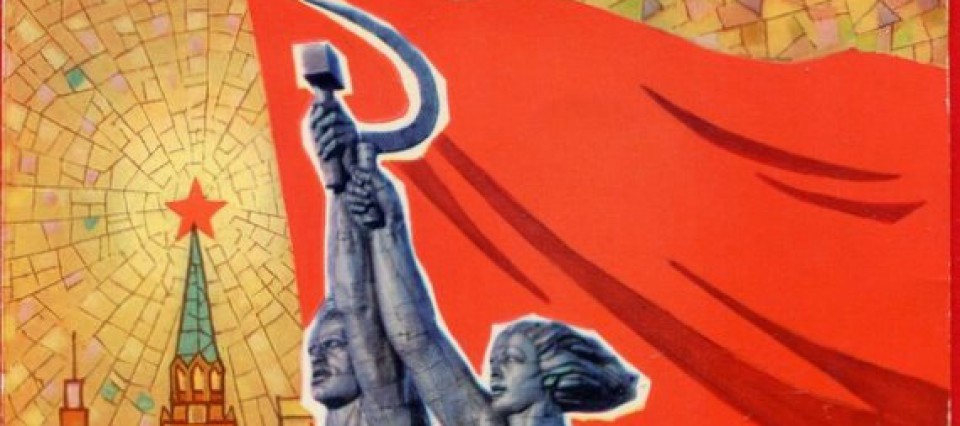Tags
Prior to World War II, the communist Soviets had never been fond of the production of automobiles. It represented free enterprise and a bourgeois lifestyle. However, in 1929 the Soviet government singed an agreement with Ford Motors to build a factory in what is now known as Gor’kii. The Gor’kii Automotive Factory (GAZ). The GAZ would be more known for its size and ability to produce, rather than the automobiles themselves. According to Lewis Siegelbaum, author of Cars for Comrades: The Life of the Soviet Automobile, the GAZ, as well as other automobile factories, began slowing in production of commercial automobiles due to the need for steel in the production of tanks. The production decreased from 211,000 in 1938 to 145,000 in 1940.
Following the war, Stalin approved two new models, Pobeda (Victory) and Moskvich (muscovite). Although the prices were far too high for the common worker, the small number produced allowed for there to be more demand than product. People would be put onto waiting lists for months and even years before being able to get their hands on the new automobiles.
Stalin would also have a series of highly prestigious automobiles produced from Moscow’s Stalin Factory (ZIS), including the speedy ZIS-110 and the monstrous armor-plated ZIS-115 and ZIS-110B (convertible version). However, their were only a few dozen 115’s produced and most were owned by the Kremlin. Stalin owned five of his own and alternated which one he would drive each day as a safety precaution.
The importance of Stalin allowing the increased production and sales of automobiles is how it portrays a consumer based economy and eases tensions with the wary, free-market West. The “Big Plan” identified the Soviet’s inability to deal with conflict following World War II due to the fragility of their political structure and economy. Stalin, therefor, allowed for a more democratic look to the post-WWII USSR. Whether or not the increased production and sales of cars actually eased tensions is unknown, however, it did introduce automobiles to a progressive soviet society.
Sources:
https://books.google.com/books?id=Aksy4KQ-zVYC&q=GAZ#v=snippet&q=GAZ&f=false







One of my teachers last year said that the Russian cars built in the GAZ had two cylinder engines and were just all around terrible cars. I did not know that Ford helped build the factory so maybe they were better built than he believed. Awesome post, thank you for sharing!
LikeLike
According to one of the articles, the Pobeda was much higher end than the Moskvitch and withstood almost anything. However, I highly doubt that they could compete with many American cars. Again, Stalin allowed these cars to be produced as a way to show a more consumer based economy. I do not believe he cared to much about their quality except when his own protection was at stake, hence the high quality of the ZIS-115.
LikeLike
The average citizen had an extremely hard time purchasing a car. It cost them about 2 years pay and then they had to wait on a waiting list for almost 6 years. There production was definitely just to say that they did and to be more similar to the West.
LikeLike
It is really interesting to find where Stalin and the soviet government gave into some of the western capitalist economists. I didn’t recall anything like this happening until the 1980’s, but there were some exceptions, including this. But I must say that this was cleverly executing by limiting the production. It did stay away from the mass production unlike Ford’s original plan of practically crapping out cars.
LikeLike
It is definitely ironic that Ford had built the factory, but the production plan was almost opposite that of his American factories.
LikeLike
It’s really interesting how Stalin allowed minimal production of cars in order to appear more democratic to both the West and his own people. I think that this is a great representation of the Big Deal, as it provided the illusion that the Soviet Union was becoming more democratic while not actually changing policy very much. Great post!
LikeLike
It is crazy how Stalin decision to permit automobiles was such a big deal and how much it said about not only Russia, but free markets and their relations to other countries. I also find it interesting how he was almost a car fanatic and owned multiple automobiles. Good job!
LikeLike
The Soviet auto industry would eventually grow and more models of cars would be produced. Interesting enough many were terrible cars but offered unique options like ice fishing hatches in the floor boards. Really interesting that this all got started with an American company too! Love the pictures with the article!
LikeLike
I believe the cars were way to high priced in order to have a positive affect on the economy at the time. The consumer base for automobiles was way to small. However, every little bit helps for the economy, and it did create a demand. In the end it was a good idea to introduce automobiles to the economy at that point in time.
LikeLike